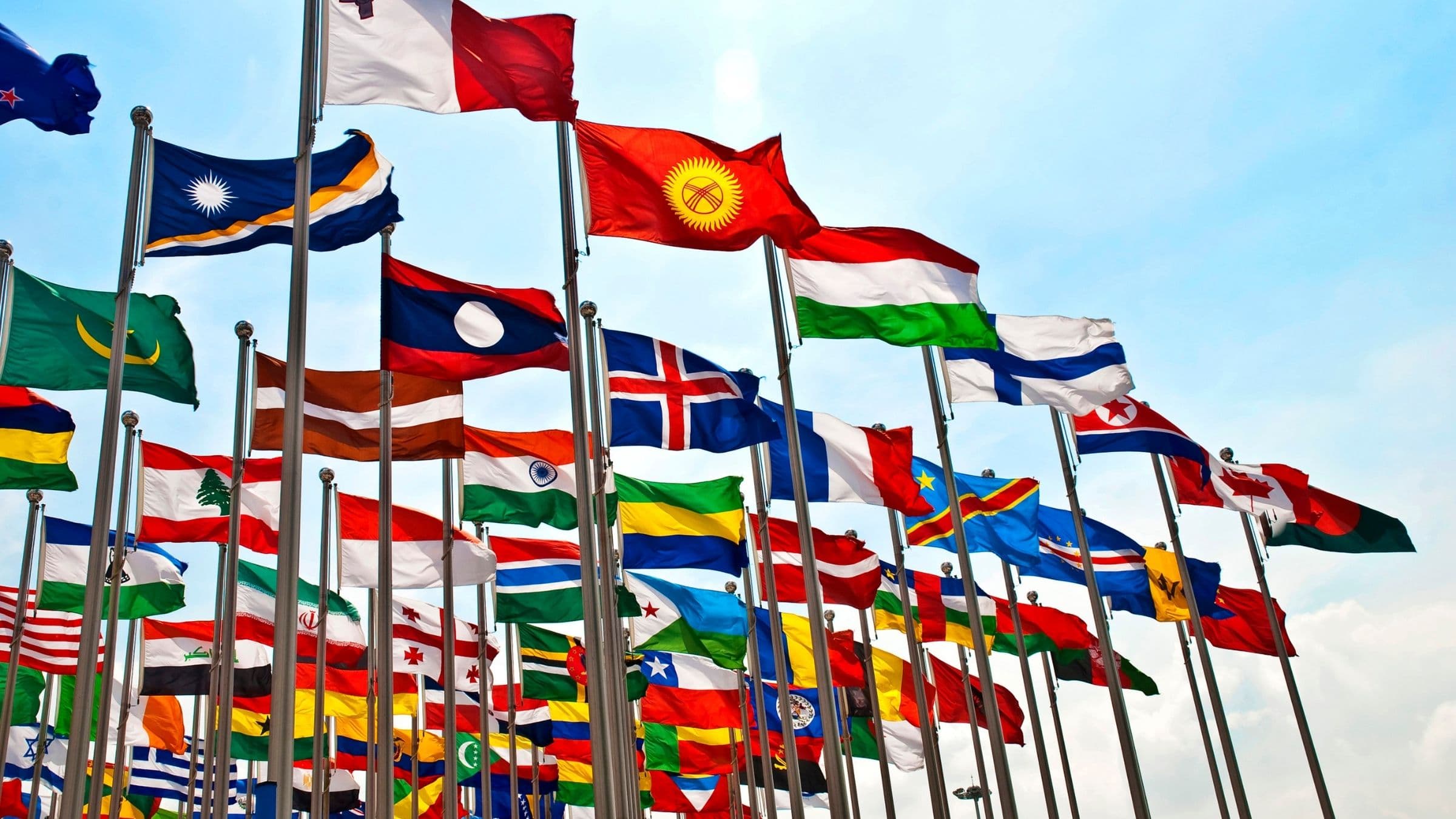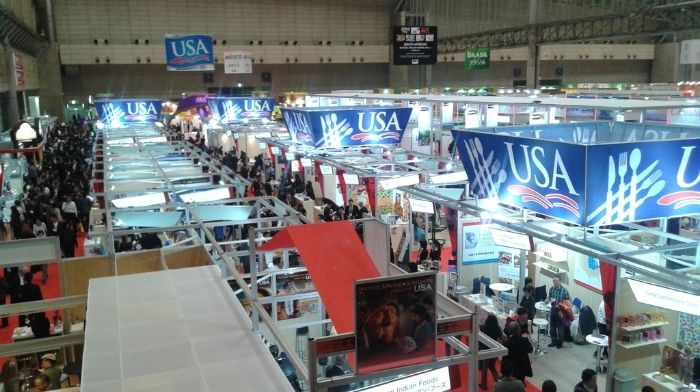
COUNTRY PROFILE
Discover more about the Brazil market including overviews about the retail, foodservice, and food-processing sectors. Events, resources, and more are linked throughout the profile.

$288.1 million
total U.S. exports of processed foods to Brazil in 2023

3rd
largest market in South America for the export of U.S. processed foods

218.6 million
total population in 2023
Euromonitor reports that in 2022, Brazil’s economy experienced real growth, fueled by rising private consumption, capital investment and external demand. However, the country’s economic prospects will see challenges by the worldwide economic slowdown, persistent inflationary pressures, and stricter financial conditions. These factors dampen business and consumer confidence, increase uncertainty, and negatively impact Brazil’s economic outlook during 2023 and into 2024.
Focus Economics reports that despite exhibiting better-than-anticipated economic performance in 2022, Brazil’s short-term prospects remain bleak. The country’s high interest rates, coupled with slow but high inflation are hampering private consumption, while external demand for Brazilian exports is weakening due to the global slowdown. Additionally, newly elected president Lula da Silva’s challenge of achieving fiscal consolidation adds to the uncertainty, as evidenced by social unrest and massive riots provoked by his supporters in January.
Brazil is the largest and most populous economy in Latin America, with GDP worth around a third of the regional total. Brazil is also the third-largest emerging market after China and India. Brazil has a diverse economic structure encompassing agriculture, mining, manufacturing, and services. Brazil is a global leader in agriculture, renowned for being one of the world’s largest producers of coffee, soybeans, beef, sugar cane and ethanol. The sector benefits from advanced agricultural technology and vast arable land. Brazil is also an important producer of iron ore and oil and holds large reserves of minerals that will be integral in the green transition, such as graphite, nickel, manganese, and rare earth elements.
In 2023, population reached 218.6 million (CIA World Factbook Est.), an increase of 43.6 million since 2000. By population Brazil is the seventh largest country in the world. The median age was 34.7 years in 2023, 11.8 years greater than in 2000. Fertility has been falling rapidly but it is still 1.8 births per female. The downward trend will decelerate in the future, reaching about 1.6 births per female by 2030. Sterilization, abortion, and programs for family planning are driving the decline.
The number of those over 65 years more than doubled in 2000-2022, reaching 22.9 million by the end of that period. However, this group still accounts for just 10.2% of total population – a relatively small share compared with most countries. Demographers expect the ageing process to accelerate in the future, with the share of those over 65 years reaching 13.6% of total population by 2030.
Brazil is a member of the Common Market of the South (Mercosur), a trade bloc that includes Argentina, Bolivia, Paraguay, and Uruguay. Venezuela’s membership in the organization was suspended in August 2017. After the Asian and Russian financial crises, Mercosur adopted a protectionist stance to guard against exposure to volatile foreign markets and it currently is negotiating Free Trade Agreements with the European Union and Canada. Their trade policy is protectionist: Average tariff rates are more than double the Latin American average.
USDA’s Office of Agricultural Affairs (OAA) in Sao Paulo, hereinafter referred to as FAS Post Sao Paulo, reported that in 2022, imports of consumer-oriented products by Brazil reached US$5.2 billion, an 8% increase compared to the previous year. The U.S. States maintained its position as the fourth major supplier, with a 5.4% market share. On the other hand, European countries, direct competitors to the U.S. gained two percentage points of market share, accounting for 30% of the market. Both are positioned at a higher price level and offer products with similar quality and standards; therefore, it is plausible that U.S. companies have considerable room to grow in the Brazilian market.
Brazil is the third largest market in South America for the export of U.S. processed foods. In 2022 Brazil imported US$314.9 million in processed foods, and an increase of 24%. In 2023, U.S. exports to Brazil decreased 8% to US$288.1 million. That equates to about US$26.8 million which adds to the U.S. trade deficit in food and agricultural products.
Top U.S. processed food exports to Brazil in 2023 included:
Although Brazil is going through a difficult time economically, the food sector is a key one for the country and has been less affected than other sectors of the economy. Brazilians spent around 17% of their disposable income on food and this remains unchanged. Brazil continues to be an attractive consumer market. Half of the country’s population is considered middle class and around 16 million are at the top of the social pyramid, the very rich consumers.
FAS Post Sao Paulo suggests that when approaching the Brazilian market, exporters should be aware that most imported foods and beverages are not priced competitively compared to locally produced products. The Brazilian food industry is well developed, and major multinational companies have a consolidated presence in the market, making the sector highly competitive. A common mistake U.S. companies make is assuming that products that fit well in other Latin American countries will fit well in the Brazil market. In general terms, a product imported from the U.S. or Europe reaches three to five times the Ex-Works (EXW) price at retail. U.S. exporters should bear in mind that when an imported product reaches supermarket shelves it will fit in the premium price category. For this reason, premium attributes must be recognized by consumers.

$113.6 billion
estimated total retail sales in the packaged food market in 2023

59.9%
growth rate of retail sales in the packaged food market since 2019

10th
largest market for packaged food in the world
According to Euromonitor, retail sales in the packaged food market in Brazil are estimated to reach US$113.6 billion in 2023. That makes it the largest in Latin America and the 10th largest in the world. That also represents a growth rate of 59.9% or US$42.5 billion since 2019. The forecast for growth in this market is also quite promising. By the year 2028, the retail sales in the packaged food market in Brazil is expected to reach US$168.6 billion, a growth rate of 35.2%, or US$43.9 billion from 2024. High growth rates in the forecast included:
FAS Post Sao Paulo reports that the Brazilian retail sector is the most critical channel in the food distribution system, capturing about 80% of food and beverage flows through almost 95,000 retail operators. The industry is well-integrated, dynamic, and sophisticated. According to the Brazilian Supermarket Association (ABRAS), the retail sector has US$134.8 billion in revenues in 2022, representing 7% of the country’s GDP. This includes various food retailing formats, such as neighborhood stores, supermarkets, hypermarkets, cash-and-carry, and e-commerce.
The food retail industry is a major employer in Brazil, directly and indirectly employing 3.2 million people. Daily, 28 million consumers visit retail stores throughout the country. The sector continues to innovate, and many companies are importing directly to offer the best products to Brazilian consumers. In 2022, Carrefour maintained its leadership as Brazil’s largest retailer for the seventh consecutive year, with reported sales climbing 30% over 2021. Assai reached revenues of US$11.6 billion through its 263 stores, 51 of which were opened in 2022.
In 2022, the 500 leading supermarket companies, through their 9,600 stores, or 10% of the overall number of stores, represented about a 21% increase of the sector compared to last year. The 500 largest retailers registered US$97.2 billion in revenues in 2022. The penetration of technologies, advanced managing capacity, consumer research, and higher levels of investment continuously improve efficiency and have turned food retailing into a highly attractive segment with intensive competition.
Despite being the largest economy in Latin America, Brazil is still relatively closed compared to other large economies, with a low trade penetration and a low number of exporters operating in the consumer-oriented products category. Nevertheless, Brazil is the world’s 22nd largest importer of consumer-oriented products. The country’s main partners in this segment are Mercosul members (Argentina, Paraguay, and Uruguay), Chile (a Mercosul-associated country), the European Union (plus the United Kingdom), China, and the U.S. Mercosul members and Chile benefit from free trade agreements and maintain their position as Brazil’s primary exporters. China supplies the market with lower price range products, while European countries and the U.S. offer products at the premium price and, therefore, tend to be positioned in the higher-end segment.
FAS Post Sao Paulo advises U.S. suppliers and other stakeholders that when launching new-to-market products, Brazilian buyers are hesitant to purchase full containers of single products while, on the other hand, U.S. suppliers are often unwilling to deal with small volumes. Oftentimes exporters are cautious to do business with a single supermarket chain as their perception of reaching consumers through a single source does not seem attractive. They advise that this perception does not always correspond to reality. It is a matter of strategy, as retailers may achieve significant market penetration.
FAS Post Sao Paulo reports that considering imported food products fall into the premium price when reaching supermarket shelves, the general characteristics exporters should consider well-known brands, high-end attributes, one-year shelf life or more, attractive packaging, and products that confer status and level of innovation. Products that combine these characteristics are more likely to enter the market successfully.
The food categories that are most frequently exported to Brazil from the U.S. are: dairy products, processed vegetables, wine and related products, fresh fruit and vegetables, soup and other food preparations, beef and beef products chocolate and cocoa products, sausage casings and processed fruit.

$106 billion
foodservice sector sales in 2022

9.8%
increase in foodservice sector sales since 2021

~20%
increase in spending spending at bars and restaurants in 2021
FAS Post Sao Paulo reports that according to the Brazilian Food Processors’ Association (ABIA), foodservice sector sales in 2022 were R$548 billion (US$106 billion), an increase of 9.8% over 2021, adjusted for inflation. After a long period of social isolation, consumers were motivated to go out and enjoy bars, restaurants, and hotels. According to the Brazilian Association of Bars and Restaurants, in the second half of 2022, spending at bars and restaurants increased almost 20% over the same period in 2021. Industry expects the recovery to continue throughout 2023 as more establishments continue to open.
With the market increasingly competitive, the supply of differentiated foods and beverages can make a difference in many situations for foodservice operators. Meat, alcoholic beverages, and special chocolates are a few examples of products imported by the foodservice sector. Due to logistical costs, exchange rates, and import taxes, these products are mostly placed in the Premium category.
Brazilian companies typically import small volumes, especially when testing new products. Volume is the determining factor for a direct import operation. If the hotel, restaurant and institutional (HRI) buyer cannot justify the logistics and bureaucracy, then wholesalers, distributors, and trading companies step in. In Brazil, there are very few distributors of imported foods specialized in the HRI sector. The companies that provide such services are the ones that manage imports of products for large fast-food chains such as McDonald’s, Burger King, and KFC. In general, distributors and trading companies do not focus on exclusive niches, retailers, or foodservice operators. For example, if the product is an ingredient, the local distributor and trading company will target both the food processing and foodservice industries.
Imported consumer-oriented products in Brazil are considered luxury goods and consumers are looking for high-end and exclusive attributes. While Brazilian consumers do perceive U.S. imports as high quality, preference is for European products due to their strong association with premium characteristics and Brazilians’ robust cultural ties to European countries.
Despite the challenges, Brazil still presents good opportunities for U.S. exporters, especially in the sophisticated niche markets of the southeast region. In this region, many supermarket chains and HRI operators are investing in more upscale establishments to cater to affluent consumers; however, the supply of imported products is still limited outside of major cities.
FAS Post Sao Paulo reports that products with high potential in the Brazilian HRI market include foodservice unit packages, one-year shelf life or more is desired, especially those produced by companies that own well-known brands. Products that optimize kitchen processes such as dehydrated, lyophilized, pre-cooked, and prepared mixes are in high demand.

$209 billion
registered revenues in the food processing sector in 2022

10.8%
of national GDP from food processing

38,000+
companies in the food processing sector
According to the Brazilian Food Processors Association (ABIA), the country’s food processing sector registered revenues of US$209 billion in 2022, an increase of 16.6% compared to 2021. Food processing represents 10.8% of national GDP. The sector is comprised of over 38,000 companies, of which the vast majorities are small and medium-sized industries.
Brazil follows international food trends and continuously experiments with innovative products with high added value. The country has seen a surge in the availability of plant-based products, with an increasing number of launches each year. Industry is also actively introducing products with “immunity-boosting” benefits. Similarly, there is growing demand for ingredients that enable manufacturers to produce products with a “clean” label, indicating natural, organic, and gluten-free attributes, and a “clear” label, that provides information on ingredient sourcing, manufacturing processes, and enhanced ingredient transparency. U.S. ingredients are highly competitive in this regard.
Food and beverages represent 80% and 20% of total sales, respectively. There is a growing demand for ingredients that allow manufacturers to have products with a “clean” label (with claims like natural, organic, and gluten-free) and clear labels (with information about the sourcing of ingredients and the manufacturing process). The plant-based is growing and a higher number of products are being launched every year. Local companies are increasing the launch of products with immunity-boosting benefits. When it comes to food ingredients, the country is highly dependent on international suppliers to meet its demand.
There are opportunities for the U.S.to provide more technological ingredients to the feed and food industries. Such opportunities include dairy ingredients (such as whey protein, milk albumin, and casein for infant formulas), alternative proteins for plant-based products (pea, soy, rice, and others), fibers (both soluble and insoluble), emulsifiers and stabilizers, flavors and flavor enhancers, vegetable fats, among others. However, producing these products requires significant research and technological efforts to meet the demands of the industry. Given the diverse and robust food ingredients industry in the United States, it can supply Brazilian food processing companies with these innovative products.
The food processing subsectors are:
FAS Post Sao Paulo reports that U.S. products in the market with good potential include animal feed preparations (non-pet), food preparations, enzymes and prepared enzymes, other edible mixtures preparations of fats, oils, odoriferous substances and essential oils, milk albumin, including concentrates of two or more whey proteins, hop cones, in the form of pellets, peptones and derivatives, mucilage and thickeners and vegetable saps and extracts of hops, and products consisting of natural milk constituents.
Products not present in significant quantities with good sales potential include wheat flour, malt, fresh nuts (almonds, pistachios, walnuts, coconuts), fruits (cranberry, blueberry, cherries, pears) dairy ingredients, beans, flour, pea protein and fibers as plant-based ingredients, vegetable oils and ingredients for healthy products.
